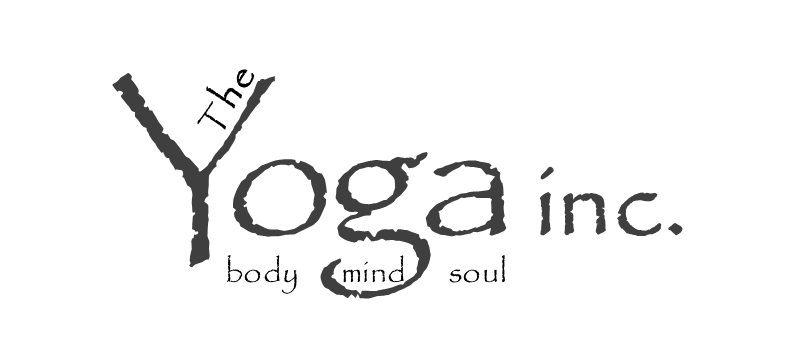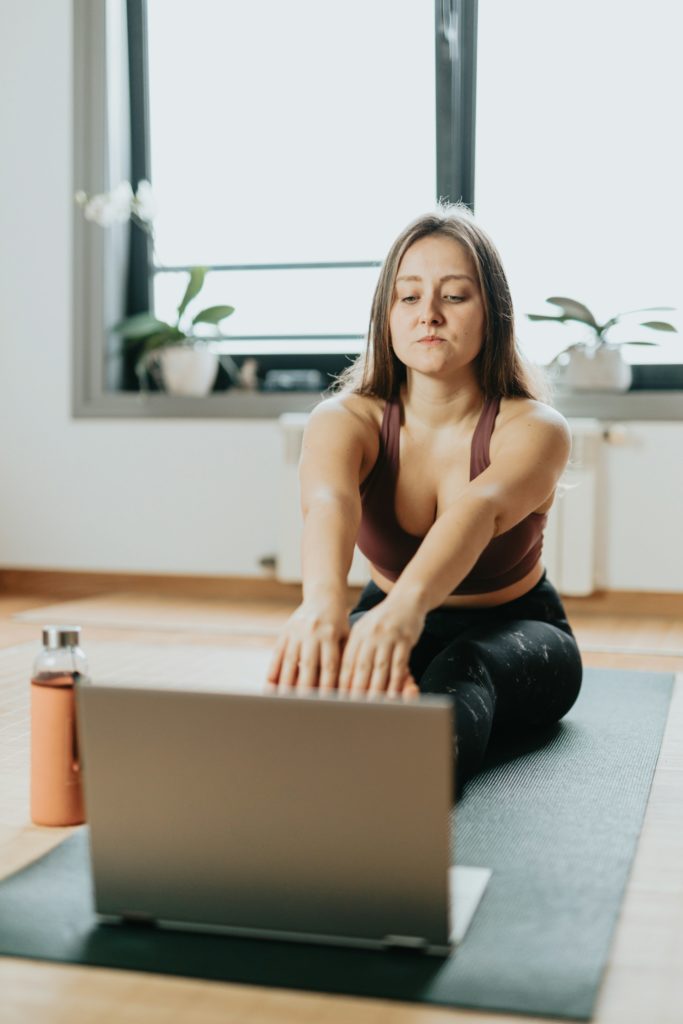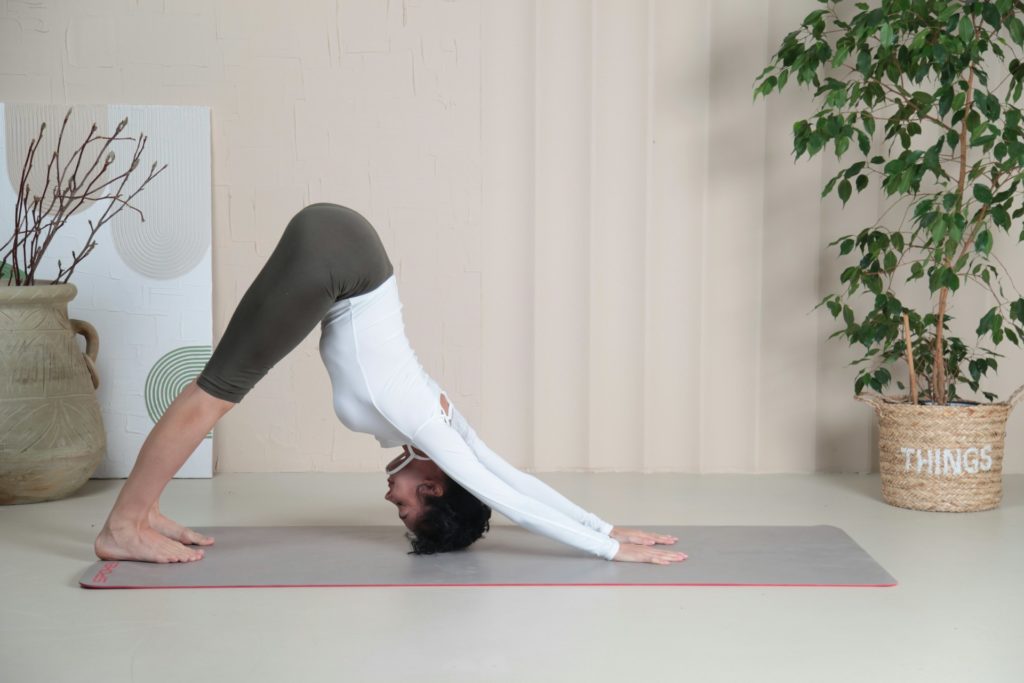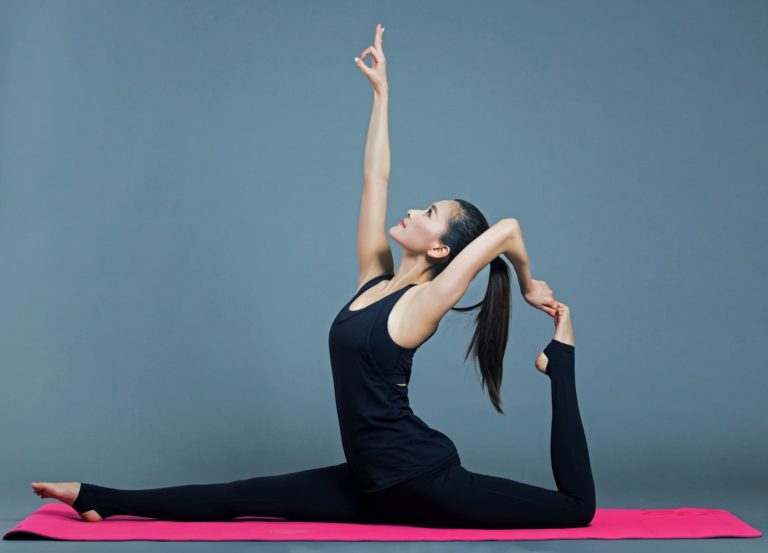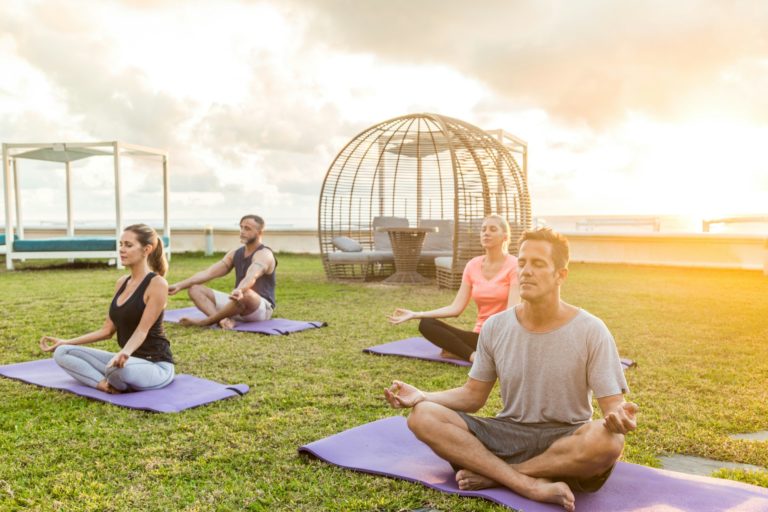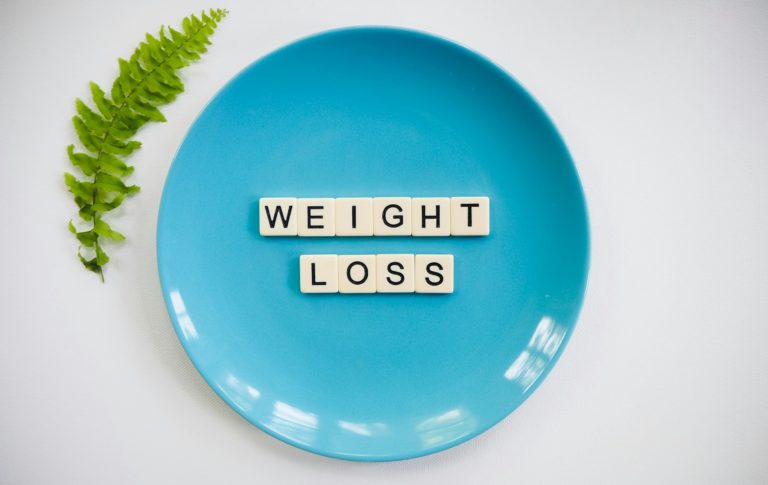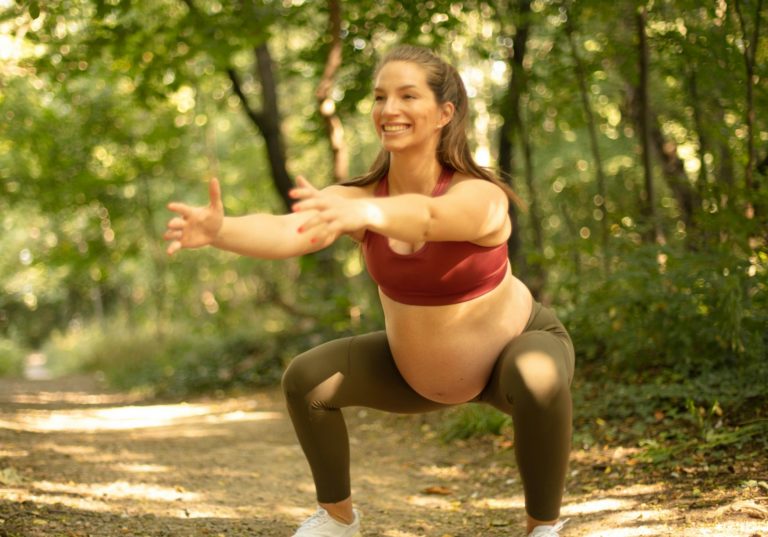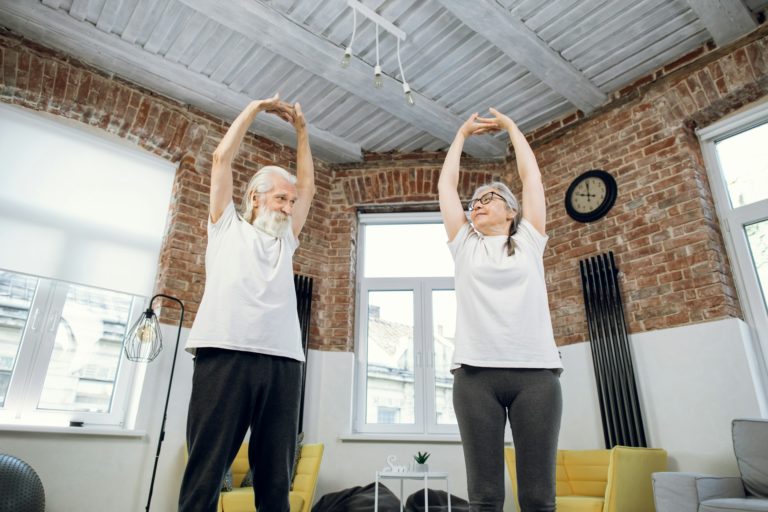Start Your Journey with Yoga for Beginners at Home
Have you ever thought about trying yoga at home but felt unsure about the poses? Starting yoga at home isn’t hard. It’s great for your body and mind.
Starting your yoga journey at home is thrilling. You can achieve a complete yoga workout at home by following a sequence of poses and holding each movement for a few breaths. Anyone can join, no matter their age or fitness level. Yoga exercises at home are perfect for getting healthier, less stressed, or getting to know yourself better.
Imagine yourself sitting cross-legged on a yoga mat in your home, surrounded by plants and natural light coming in through the window. They are calm and relaxed as they practice beginner yoga poses, such as a downward-facing dog or child’s pose. The atmosphere is peaceful and serene, with soft instrumental music playing in the background.
At first, yoga at home for beginners might be challenging. Balance, flexibility, and strength could be complicated. You might not get poses right. Remember, yoga is about you, not being perfect.
Thanks to many free yoga videos online, starting your home yoga is simple. Even with just 15 minutes, you’ll find a yoga home workout that fits. Daily yoga practice at home brings great benefits like less stress and better sleep.
So, are you ready for a journey of self-discovery through basic yoga for beginners at home? Let’s explore the benefits and bust myths and get you started on your home yoga workout today.
Key Takeaways
- Yoga is an inclusive practice that welcomes everyone, regardless of age, fitness level, or background.
- Starting a yoga practice at home is possible and rewarding for both the body and mind.
- As a beginner, facing challenges with balance, flexibility, or strength is normal.
- Yoga isn’t about perfection or competition; it’s a personal journey of self-discovery and growth.
- With thousands of free yoga videos available online, starting a home yoga practice is easier than ever.
- Incorporating a short daily yoga practice can lead to significant well-being benefits, such as reduced stress, better sleep, and increased focus.
Embrace the Benefits of Starting Yoga at Home
Starting yoga at home opens doors to many good things. It’s a complete approach to health. Yoga works on your whole body and mind, making you feel great.
Physical Benefits of Yoga Practice
Yoga boosts flexibility and enhances body awareness, helping you better understand your body’s position and movement. Over time, you’ll feel looser and move better, which helps relieve pain in your back and neck.
Yoga also makes you strong. Poses like Downward Dog and Plank work many muscles, making your whole body solid and healthy.
It’s also good for your heart. Some yoga types raise your heart rate, while others, like Yin Yoga, calm and lower your blood pressure.
Mental and Emotional Benefits of Yoga
Yoga’s real magic is in your head and heart. It makes you calm and mindful, cutting stress and anxiety. It’s like finding peace in a busy world.
Yoga can even help with feeling down. Moving, breathing, and meditating in yoga make you happier, and it’s great for your mind.
Yoga also helps you sleep better. Learning to relax with yoga makes bedtime better. You’ll wake up feeling ready to go.
Keep at it with yoga at home, and be kind to yourself. Small wins count a lot. Soon, you’ll see yoga’s big change, in and out of your practice.
Overcoming Common Myths About Yoga
Starting yoga at home made me see a lot of myths. Many think you have to be super flexible to do yoga. But that’s not true. Yoga is more than stretching. It’s about finding your inner self and growing, no matter how flexible you are.
Some people also think yoga is a religion. It can be spiritual but not tied to any faith. Regardless of their beliefs, anyone can enjoy yoga’s mental and physical benefits. In the U.S., over 12.3 million families practice yoga, showing it’s for everyone.
Yoga doesn’t need lots of time or a special place. Just five minutes of practice can change your day. You don’t need a large space. Even a little mat in your living room makes yoga top-notch for anyone.
Some believe yoga is very complex or requires special training. While teachers can help, 75% of people practicing at home enjoyed better results by just having fun. Listening to your body and doing what feels good is essential.
Yoga is not about touching your toes. It’s about what you learn on the way down.
Yoga showed me it’s more than exercise. It’s about calming the mind, controlling your breath, and learning about yourself. By ditching the myths, I found balance, peace, and health through yoga.
Essential Items for Your Home Yoga Practice
Starting your yoga journey at home doesn’t require expensive gear. A few essential items can improve your practice. Let’s look at what you need to start this new journey.
Choosing the Right Yoga Mat
Your yoga mat is vital. It gives you a place to move and helps with balance and comfort. Start with a basic mat for about $20. Later, you might want to upgrade to a mat with the right thickness, costing $80 to $120.
When picking a mat, 3.3mm thick is a good middle ground. Natural rubber mats are eco-friendly and long-lasting. They also offer excellent grip, making your poses safer.
Yoga Blocks and Straps: Helpful Accessories
Yoga blocks and straps can make poses more accessible and safer, supporting those who need them. Yoga blocks help you reach the floor in poses like Extended Side Angle and Triangle Pose, and straps let you extend your arms. You can buy a set for under $13 and straps for under $10. If you don’t have them, use what you can find at home, like books or a belt.
Comfortable Clothing for Yoga Practice
Comfortable clothes are essential for yoga. Choose stretchy, breathable fabrics to feel more comfortable while you practice.
Yoga pants and a good sports bra are often the best choices. You can find yoga pants for under $50. For the bra, look for what supports you without being too tight or loose. You don’t need fancy brands. Just get what you feel good in on the mat.
As you get deeper into yoga, you might want more accessories. Things like bolsters and blankets are great for certain yoga types. To keep your mat clean, a mat wash costs about $11 a bottle.
But remember, what matters is that you show up ready to learn. Trust your feelings as you practice. And don’t be afraid to ask other yogis for advice on what else might help you grow in your practice.
Setting Up Your Home Yoga Space
Creating a particular spot for yoga at home helps a lot. It makes it easier to keep up with your yoga. Pick a quiet place where you can focus. If you can, making this area just for yoga will help you get into a peaceful state of mind. You can breathe deeper and relax better.
Creating a Dedicated Yoga Area
Think about how much space you need for your yoga. You should have enough room to lay out your mat and move around. Keeping your feet hip-width apart can help maintain stability during various yoga poses. Also, ensuring space around you will help if you accidentally bump into walls or furniture during tricky poses.
Adding your personal touch to your yoga space is excellent. You could add a little area for particular things, like crystals or photos. Plants also do wonders for how you feel. They make the space feel happy and calm.
Ensuring Proper Lighting and Ventilation
Good light can change the whole feel of your yoga space. If you can, set your mat close to a sunny window. The sunlight will help make you feel happier and more relaxed. If it’s dark, soft lights or candles work well too.
It’s also essential to have fresh air while you do yoga. A room with a window you can open is perfect. Fans or air purifiers can also keep things nice and fresh. Using calming smells can make your space even better for yoga.
Designing your area for yoga is a remarkable thing. It can boost your yoga practice. Your space can help you get all the good vibes from yoga.
Understanding Basic Yoga Terminology
When I started my yoga journey, knowing key yoga words made me more sure and connected to the practice. I learned that many yoga terms come from Sanskrit, an old Indian language.
“Asana” was the first term I saw. It refers to the poses we do in yoga. They help us become stronger and more flexible and feel better. “Pranayama” refers to breathing exercises, which are very important in yoga.
“Namaste” is a word I learned, too. It’s a nice greeting at the end of yoga. It says, “I respect the good in you,” showing the whole person, including their spirit.
“Mantras” are words that help you focus during meditation, and “mudras” are hand signals that help energy move in the body. Knowing all this makes my yoga practice more meaningful.
Learning yoga words has made my practice better. It’s linked me to the deep history and thoughts of this old practice.
Learning these key yoga words has made my practice more thoughtful. Thanks to what I understand, I now see yoga as very powerful.
Mastering Foundational Yoga Poses for Beginners
Mastering basic yoga poses is critical for beginners. These poses build strength, flexibility, and awareness. You’ll learn to stand right, balance well, and feel confident.
A group of people practice yoga on a grassy field, focusing on beginner-level postures such as Downward Dog, Mountain Pose, Tree Pose, and Cobra Pose. The sun is shining in the background, and there is a feeling of tranquility and unity among the group. Show variations of each pose to highlight that modifications are available for different levels.
Starting yoga means knowing it’s not quick. Like a new language, learning poses is a journey. So, be patient and happy about your progress.
Mountain Pose (Tadasana)
Mountain Pose is simple but strong. Stand tall and balance. It boosts your posture and strengthens your legs and core, making you feel more stable and steady.
Child’s Pose (Balasana)
A child’s pose is a break, stretching your back and more. It calms and rests you. Use it between more challenging poses to find your breath and peace.
Downward-Facing Dog (Adho Mukha Svanasana)
Downward-facing dog stretches and strengthens your whole body. Maintaining a straight line from your hands to your hips is important. It also lengthens your spine, boosts your energy, and relaxes you.
Remember to breathe and listen to your body in these poses. Blocks or straps can help. With time, you’ll get stronger and more flexible. The beauty of yoga is that it fits everyone. No matter your age or shape, yoga is good for you. Enjoy learning and being gentle with yourself in this yoga journey.
Incorporating Breathing Techniques into Your Practice
In my yoga journey, I’ve learned that breathing techniques are vital. They boost yoga’s physical effects, clear the mind, and soothe the nerves.
A 2020 study notes the power of belly breathing. This method involves breathing deeply into your belly, which expands and contracts with each breath, which is excellent for people with COPD, heart problems, or cancer.
The Equal Breathing technique is also excellent. You breathe in and out for the exact count. It makes you feel better mentally and gives more oxygen to your brain and lungs.
Ujjayi Pranayama (Victorious Breath)
I love Ujjayi Pranayama, a breathing technique involving deep-nose breaths. You gently tighten your throat, making an ocean-like sound. This breath helps me focus and warms my body inside.
Five full breaths per minute is Resonant breathing. It raises heart rate variability and lowers stress. A 2017 study found it helps with depression when done with Iyengar yoga.
Nadi Shodhana Pranayama (Alternate Nostril Breathing)
Alternate Nostril Breathing is also great. You inhale and exhale through each nostril. It balances the mind and calms you.
In 2017, a study found that doing this for 30 minutes daily helped swimmers breathe better.
In a study, people who did this practice for 5 days twice a day had lower blood pressure and heart rate, and felt less anxious. Their mood was better too, and their brain reacted different to emotions after four weeks.
Other great breathing methods include:
- Sitali breath involves inhaling through the mouth and exhaling through the nose. It cools the body and eases the mind.
- Humming bee breath (Bhramari) brings calmness, slows the heart rate, and lessens anger and worry.
- 4-7-8 breathing is suitable for managing breathlessness, anxiety, and depression in people with COPD.
Exploring these breathing techniques has deeply impacted me. They have improved my yoga journey. Now, I feel more present, balanced, and at peace.
Developing a Consistent Yoga Routine at Home
It’s critical to have a regular yoga routine at home. About one in three yoga fans likes to do yoga at home. You only need a few minutes each day to start building a solid yoga habit.
When you plan your yoga time, consider how it fits into your life. It’s best to start with short practices and then add more time. Many yoga lovers say daily yoga can make you more productive and focused.
Half of yoga pros recommend 4 or 5 poses to start your personal yoga time. Pick poses you like and feel good doing, like 70% of people do. Adding poses you’ve learned in classes is a good idea, too, say two-thirds of yoga teachers.
Always remember, being regular with yoga is really important. Almost all yoga teachers talk about the need for commitment, patience, and being kind to yourself to keep up with practicing at home.
As you make yoga a regular thing, here are some tips to try:
- Choose a set time daily to practice to help make it a habit
- Start with easy poses, such as sun salutations, to get stronger and more flexible
- Focus on deep breathing and being mindful in all you do
- Learn to do poses step by step to understand your body better and make changes if needed
- Check out online yoga classes like those by Yoga With Adriene or SarahBeth Yoga for great at-home practice
Sticking to a regular yoga practice at home will make you feel better physically, and your mind will be clearer and more relaxed. Listen to your body’s feelings and be kind to yourself while developing this powerful habit.
Yoga for Beginners at Home: Guided Video Practices
Starting my yoga journey at home has been great. I love using online videos to learn. Platforms like Yoga International and Omstars have many yoga classes. These are perfect for beginners like me, with experienced teachers who give me all the help I need to start well.
One cool thing about these videos is the different class lengths. If I’m busy, I can choose short yoga sequences, which can be as quick as 10 to 30 minutes. Doing these regularly makes yoga accessible and fits it into my day.
Short Yoga Sequences for Busy Schedules
When my day is hectic, I do the 10-minute yoga practice. They were great when I was a beginner like myself. There are lots of styles to try. Some include:
- Morning sequences to gently wake up the body
- Power sequences to build strength and energy
- Prop-free practices that you can do anywhere
- Whole-body flows to promote flexibility and balance
- Wind-down practices to prepare for a restful sleep
These short yoga videos focus on simple moves and basic postures. They’re perfect for a busy day. The teachers explained everything, so I felt safe and followed them well.
Longer Yoga Practices for Deeper Exploration
Sometimes, I have more time and take 45- —to 90-minute classes. These are deep dives into yoga, helping me learn more about each pose and what yoga is about. Longer guided yoga practices often include various postures, such as twists, chest-opening poses, high lunges, backbends, and hip openers. The instructors provide detailed alignment cues and offer modifications to accommodate different experience levels. Longer classes also teach more than poses. They include breathing, meditation, and ways to relax. Ending a session with Corpse Pose helps transition from yoga practice to the rest of the day, focusing on stillness and calming the mind. Sometimes, the music is calming, making the whole experience peaceful and good for me.
It doesn’t matter if I have only a few minutes or a whole hour. I always find the perfect guided yoga practice for my day. There are so many yoga videos to choose from, making it easy to incorporate yoga into my daily life.
Staying Motivated and Committed to Your Yoga Journey
Starting yoga at home made me realize it’s tough to stay motivated. However, setting a routine and goals helped and kept me committed and moving forward on my yoga path.
Creating a particular spot for yoga at home was vital for me. It made keeping up with yoga easier, even when I didn’t feel like it. Any small, cozy space with a few items can remind you to keep at it.
Create an image that shows a person practicing yoga in a serene outdoor setting, with the sun rising in the background. The person should be deep in concentration, with their eyes closed and a look of peaceful determination. Surrounding them should be symbols of commitment and motivation, such as a yoga mat rolled out next to them, a water bottle indicating that they are staying hydrated, and perhaps even a small notebook where they track their progress and goals. The image should focus on the person’s inner strength and determination to continue their yoga journey rather than external or superficial factors.
Setting realistic goals was another big help. I didn’t jump into doing yoga daily for hours. Instead, I aimed to practice 1 or 2 days per week. Achieving these small goals helped me do more, motivating me on my journey.
At first, I thought I had to be super flexible or strong to do yoga. But, even knowing just a few poses lets you start a great yoga practice. Take your time learning and improving; it is about not rushing to master complex moves. It kept me going, and I avoided feeling down about my progress.
Connecting with a yoga teacher or community was also excellent for me. Through online classes and chats with other yogis, I stayed motivated. It provided support and a push to keep going, even without in-person courses.
Remember, yoga is a lifelong journey, not a destination. With commitment, achievable goals, and positive company, you can stay motivated. You’ll grow and progress on your yoga path.
Connecting with the Yoga Community Online
I’ve found deep value in connecting with the online yoga community. More than 80% of people find a yoga community crucial. The virtual world offers endless support and a sense of belonging.
Joining yoga forums and groups on sites like Facebook and Twitter is a great start. Track Yoga, for instance, has over 100,000 followers. It’s an excellent place to ask questions and share with others. Even though many prefer meeting in person, online connections are important. They help, especially if you’re busy and can’t attend classes often.
Joining Online Yoga Forums and Groups
When I first joined an online yoga forum, I was amazed. I found tips, support, and advice from people worldwide, which made my home practice less lonely. Forums like Yoga International and Reddit’s r/yoga cover everything from beginners’ questions to deep talks.
Facebook groups like “Yoga at Home” and “Yoga for Beginners” are also great. They post daily, do challenges, and have live sessions with teachers. By joining, I found new practices and teachers that improved my yoga.
Participating in Virtual Yoga Challenges
Online yoga challenges are getting more popular, with about 30% of people joining yearly. You commit to a daily practice for a specific time, like a 30-day challenge, and share online.
I recently did a 21-day meditation challenge with a famous studio. It was a big step for my meditation. I met people who supported me and held me accountable. The shared purpose made it very rewarding.
Online yoga platforms also offer many resources and ways to connect. Gaia provides over 500 free classes and meditations and offers retreats with different themes. Starting at $13.99 a month, these platforms provide high-quality content and a tight-knit yoga community.
Being part of the online yoga community has changed my practice. By joining forums, taking challenges, and exploring resources, I’ve found a great support system. The online world has strengthened my yoga practice and connection to the global yoga family.
Progressing Your Practice: Intermediate Yoga Poses to Explore
I’m getting ready to try more challenging poses in my yoga journey. These poses can boost my strength, flexibility, and guts. Exploring poses like Extended Side Angle Pose (Utthita Parsvakonasana) can further enhance balance and stability, with modifications available for different levels. Doing them three to four times each week helps me improve.
Warrior III (Virabhadrasana III) is one pose I can’t wait to try. It makes me stronger and helps me stand straight. If my hips or ankles hurt, I’ll use blocks to help. Crow Pose (Bakasana) is another. This pose makes my arms stronger and needs me to focus.
Wheel Pose (Urdhva Dhanurasana) is also on my list. It stretches my chest and strengthens my arms and legs. It’s good for my mind, too. But before I bend like a wheel, I’ll ensure I warm up right to prevent injury. Regular yoga practice is super important. It helps me grow without tiring myself out. Plus, using props can make challenging poses easier and safer. I’m planning to attend yoga workshops with expert teachers next week. They can show me how to do poses better. I’ve learned that yoga is a journey that goes on. It’s not just about the poses but getting better bit by bit.
These poses are going to make me stronger and healthier. I’m looking forward to it!
Conclusion
Starting a yoga journey at home can bring many benefits, including feeling better physically, mentally, and emotionally. Making a spot for yoga, learning basic poses, using deep breathing, and being steady with your practice will lay a strong base for your success in home yoga. In a 2017 survey, it was found that about one in seven Americans do yoga. So, you’re not alone; you’re part of a big group there to help.
As you progress on your yoga journey, be easy and kind to yourself. Face the complex parts and enjoy your wins, no matter how tiny. Research shows that yoga can help you improve your movement and stay balanced, strong, and calm. It can also help you manage weight, lessen pain, and see the doctor less. All these good things are possible for you, step by step.
Yoga is not just exercises on a mat. It can change your whole lifestyle, how you think, feel, and deal with the world. The more you do yoga, the more you might notice being kinder and mindful. With yoga, you can link more with yourself and others who do yoga. Enjoy the good changes that yoga brings. Your yoga transformation starts with that first step on your mat.
FAQ
Do I need to be flexible to start practicing yoga at home?
No, you don’t need to be super flexible to do yoga. It’s for people at all flexibility levels. With regular practice, your flexibility can improve. Remember, the journey in yoga is more important than where you end up.
What equipment do I need to practice yoga at home?
Start with a yoga mat, which is essential for grip and cushioning. You might also want yoga blocks and straps to help with poses. However, things like books or scarves can work, too. You don’t need much to begin.
How often should I practice yoga to see results?
Practice yoga at least three times each week. Even if sessions are short, it helps a lot. Try to do more as you get better. Remember, regular practice makes you stronger and more flexible.
Can I learn yoga by myself at home?
Yes, learning yoga at home is possible with online classes and books. It’s important to start slow, listen to your body, and be patient. Also, being part of the online yoga community can support and motivate you.
Is yoga a religious practice?
Though yoga has spiritual aspects, it’s not linked to a particular religion. People of all beliefs can benefit from yoga, and its focus on body, mind, and emotional health can match anyone’s personal beliefs.
How long should a yoga session be?
The length of a yoga session should fit your schedule and goals. Beginners can start with 10 minutes and add more time as they get used to it. Aim for 30-60-minute sessions for deeper practice as you progress.
What should I wear for yoga practice at home?
Wear comfortable clothes that allow movement. Tight clothes are not needed but avoid very baggy clothes. Yoga is done barefoot, but you can use non-slip socks if that’s more comfortable for you.
Can yoga help with stress and anxiety?
Yes, yoga can lower stress and anxiety and help with weight loss. Breathing exercises, meditation, and mindful poses can also make you feel calmer, which leads to a better overall mood and relaxation.
Source Links
- The Beginner’s Guide to Home Yoga Practice
- 8 Reasons You Should Start Doing Yoga At Home Today
- 8 Equipment Essentials for Practicing Yoga at Home
- How to Design the Perfect Yoga Space at Home
- How to Create a Yoga Studio in Your House
- The Ultimate Guide to Starting Your Yoga Journey at Home: Tips for Beginners
- How to start a home yoga practice
- .
Table of Contents
Toggle